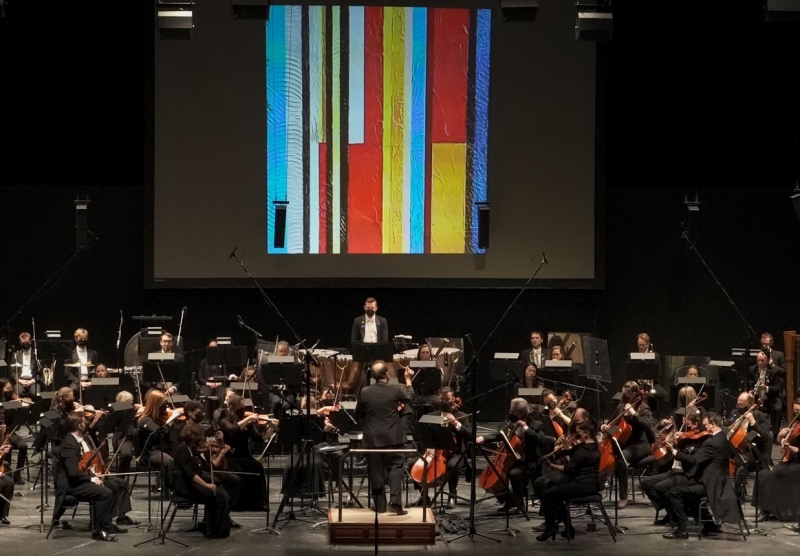When you listen to music, what do you see?
This might seem like an odd question, but for Anna Schwartz, it’s reality.
The Fort Frances-born, Winnipeg-based pianist, composer and conductor has synesthesia, a unique neurological condition that allows her to see colours and textures as she creates music. Now, together with her teacher, pianist and visual artist Shirley Elias, Anna’s way of seeing music is coming to life in a new art exhibit called Spectrum: The Colour of Music, which is set to open at the Winkler Arts and Culture Centre on February 6.
"You can almost think of it as there just being a few extra bridges in their brains,” says Schwartz, who’s also an aspiring medical student. “For people with synesthesia, sometimes you can have some bridges in the brain that just happen to connect some of those sensory areas.”
In their work as student and teacher at the piano, Anna’s unique way of approaching music was endlessly fascinating for Elias to examine. “There were hours and hours of conversation,” she recollected.
It was out of those conversations that the initial idea for Spectrum came to be. In collaboration with the Winnipeg Symphony Orchestra back in 2022, Schwartz and Elias created works of art based on Nikolai Rimsky-Korsakov's famous Scheherazade that were projected onto the screen behind the orchestra as they played and displayed on the Piano Nobile at the Centennial Concert Hall.

“I listened to the whole piece, and I had a whole bunch of pencil crayons,” says Schwartz of the creation process, “and I was writing in the colours that I saw as I was listening to this piece of music on the orchestral score and then gave that score to Shirley.”
From there, Elias organized the colours Schwartz saw into an artistic map of the piece. The result was stripes of colour that reflect the length of orchestral sections and the colours that they elicit in Schwartz’s mind. “I would dump in the little icons in this big spreadsheet that we had, and as it flowed down, I’m like, “Wow, this flow of colours is kind of cool! This is kind of the score of her listening, the ticker tape that’s going to the music!’”
For this version which will be shown at the Winkler Arts and Culture Centre, there’s almost 17 feet of canvas encapsulating all four movements of Rimsky-Korsakov's masterwork. On that canvas, Elias estimates that there are 271 unique colours and 537 stripes.

Aside from the achievement of creating the work, both Elias and Schwartz recognize the potential that using music in a medical context can have. The exhibit encourages audiences to bring their phones and earbuds to engage with recordings of the two artists talking about the work, as well as conversations with Dr. Julia Simner, a professor of neuropsychology at the University of Sussex who studies synesthesia.
“I’ve always loved the intersection of music and science,” smiles Schwartz, noting that the neuroscience component of Spectrum really brings connections not only in her brain but between her two worlds to the forefront. “It’s so cool that you can have both of them in this space of creativity and exploration and discovery.”
“This project really speaks to the power of music,” she continues, noting that surgeons will oftentimes have classical music playing in longer operations to assist with concentration. "As a physician, you’re always trying to help. I think that music helps you learn how to listen and how to empathize and how to feel.”
Audiences can feel the wonder of Spectrum at the Winkler Arts and Culture Centre from February 6 until March 22. More information can be found at Winkler Arts and Culture’s website.
